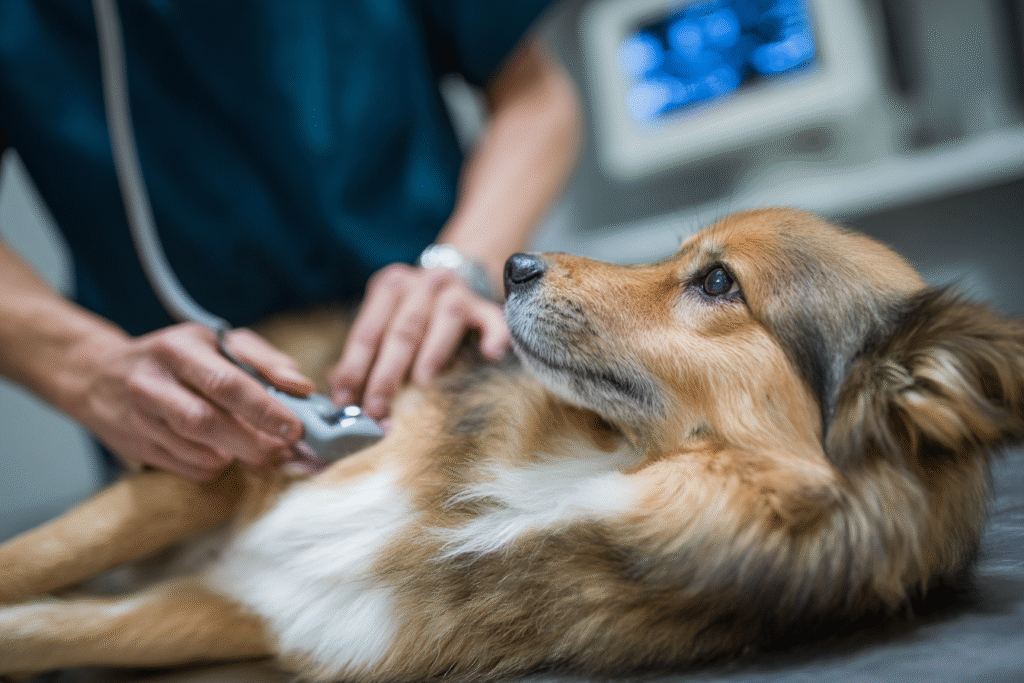When Your Dog Has a Vulvar Tumor: A Supportive Guide
Discovering a lump on your beloved canine companion can be a frightening experience, especially when it is a potential dog vulva tumor.
This comprehensive guide is designed to help you understand the essential signs and symptoms of a dog vaginal tumor so you can take prompt, informed action.
While many of these growths are benign, it is absolutely vital to rule out the possibility of dog vulva cancer or vaginal cancer in dogs.
Therefore, learning about the potential causes, diagnostic procedures, and available treatments for a dog vulvar tumor is the very first step toward helping your loyal friend.
Table of Contents
- Understanding the Nature of a Dog Vaginal Tumor
- Recognizing the Symptoms of a Dog Vulvar Tumor
- External Signs to Watch For
- Signs Originating Inside the Vagina
- What Causes Vaginal Cancer in Dogs?
- The Diagnostic Process for a Dog Vulva Tumor
- Standard Treatment Protocols
- A Supportive Approach: Exploring Vitaplus (Vidatox) for a Dog Vulva Cancer
- Life and Management After Treatment
- Frequently Asked Questions
Understanding the Nature of a Dog Vaginal Tumor
Vaginal growths are the second most common type of reproductive tumor found in female dogs.
The good news is that the vast majority of cases, around 86%, involve a benign (non-cancerous) dog vulva tumor.
These are typically smooth muscle tumors known as leiomyomas, which can sometimes have finger-like extensions. Other benign types include fibroleiomyomas and fibromas.
In many instances, a benign dog vaginal tumor might never cause any noticeable discomfort and could go undiagnosed.
However, even a non-cancerous dog vulva tumor can cause secondary complications due to its size and location, such as painful urination or difficulties during birth.
Recognizing the Symptoms of a Dog Vulvar Tumor
The signs your dog displays can vary depending on whether the mass is located on the exterior or interior of the vulva. Paying close attention to any changes is crucial.
External Signs to Watch For
You might notice a slow-growing mass located around your dog’s anus or vulvar region.
Other common symptoms include a persistent discharge from the vagina.
Your dog may also begin licking her vulva excessively.
Furthermore, you might observe signs of urinary distress, such as difficulty initiating urination or needing to urinate more frequently (a condition called polyuria).
Signs Originating Inside the Vagina
A key indicator of an internal dog vulvar tumor is a mass that protrudes from the vulva, which often becomes more noticeable when the dog is in heat (estrus).
You may also see vulvar discharge or notice your dog straining to urinate or defecate.
Painful urination is another significant red flag for a potential dog vulva tumor.
What Causes Vaginal Cancer in Dogs?
While the exact cause is not always known, there is a clear hormonal link.
A dog vaginal tumor is most commonly diagnosed in female dogs that have not been spayed.
The risk appears to be particularly elevated for intact female dogs that have never given birth. This highlights the preventative benefits of spaying your pet.

The Diagnostic Process for a Dog Vulva Tumor
If you suspect a dog vulva tumor, your veterinarian will begin with a thorough physical examination.
They will carefully consider your dog’s symptom history and any relevant background information you can provide.
To get a complete picture of your dog’s health, your vet will order a series of standard tests. These typically include a blood chemical profile, a complete blood count, and a urinalysis.
A crucial next step is a vaginoscopy. This procedure involves using a thin instrument with a tiny camera to visually inspect the inside of the vagina. This tool also allows the vet to collect a small tissue sample for a biopsy.
This tissue biopsy, along with a cytologic examination of cells drawn from the mass, is essential. These tests are the only way to definitively determine the cell type and confirm if you are dealing with dog vulva cancer.
To check if a malignant dog vulva cancer has spread, the veterinarian will likely recommend chest X-rays.
Abdominal imaging, such as X-rays or an ultrasound, can also help visualize the dog vulvar tumor. More advanced techniques like computed tomography (CT) or magnetic resonance imaging (MRI) can provide a highly detailed image of the mass, which is invaluable for assessing whether surgery is a viable option.
Standard Treatment Protocols
For nearly every dog vaginal tumor, surgical removal is the recommended course of action.
This surgery is most often performed in conjunction with spaying the dog to remove the hormonal influence that can contribute to tumor growth.
In cases of a malignant vaginal cancer in dogs, such as sarcomas, or if a benign tumor cannot be removed completely, further treatment is necessary.
Consequently, post-operative radiotherapy is often indicated to target any remaining cancerous cells.

A Supportive Approach: Exploring Vitaplus (Vidatox) for a Dog Vulva Cancer
When your dog is diagnosed with a dog vulva cancer, it’s natural to explore every available option to support their health and well-being alongside conventional veterinary treatments.
One such complementary therapy gaining attention is Vitaplus (Vidatox), a natural product derived from the venom of the blue scorpion, Rhopalurus junceus.
It’s important to view Vitaplus (Vidatox) not as a cure, but as a powerful supportive measure that can work in harmony with your veterinarian’s treatment plan.
One of the primary benefits of Vitaplus (Vidatox) lies in its significant anti-inflammatory properties.
A dog vulva tumor can cause considerable swelling and inflammation in the surrounding tissues, leading to pain and discomfort for your pet.
By helping to reduce this inflammation, Vitaplus (Vidatox) can play a crucial role in pain management.
This can lead to a noticeable improvement in your dog’s quality of life, helping them feel more comfortable and active during their treatment journey.
When pain is better managed, your dog is more likely to eat well and maintain their strength, which is vital for recovery.
Furthermore, preliminary research and anecdotal evidence suggest that the active components in Vitaplus (Vidatox) may have properties that can potentially inhibit tumor growth.
The theory is that it works by disrupting the process of angiogenesis, which is the formation of new blood vessels that tumors need to grow and spread.
By potentially limiting the blood supply to the cancerous cells of a dog vulva cancer, Vitaplus (Vidatox) may help to slow the progression of the disease.
This action makes it a compelling adjunct to traditional therapies like surgery or radiotherapy.
As always, a comprehensive discussion with your veterinarian is essential before introducing any new supplement, including Vitaplus (Vidatox), into your dog’s regimen to ensure it is a safe and appropriate choice for their specific condition.

Life and Management After Treatment
Following the treatment for a dog vulva tumor, ongoing monitoring is key.
If the tumor was malignant, your veterinarian will schedule regular follow-up appointments to monitor for any recurrence or spread.
These check-ups may include chest X-rays, sometimes as frequently as every three months. This vigilance is crucial in managing vaginal cancer in dogs.
If your dog is undergoing chemotherapy, bloodwork will be performed before each session to monitor their overall health and response to the treatment.

Frequently Asked Questions
What are the first signs of a dog vulva tumor? The initial signs can include a visible mass near the vulva, persistent vaginal discharge, excessive licking of the area, and straining or pain during urination or defecation.
Are most dog vaginal tumors cancerous? No, thankfully most are not. Approximately $86\%$ of vaginal tumors in dogs are benign, smooth muscle tumors. However, a veterinary diagnosis is the only way to be certain.
How is a dog vulvar tumor diagnosed? Diagnosis involves a physical exam, bloodwork, and imaging like X-rays or ultrasound. A definitive diagnosis is made through a biopsy, where a tissue sample from the tumor is examined to identify the specific cell type.
What is the main treatment for a dog vulva tumor? The primary treatment is the surgical removal of the tumor. This is typically performed at the same time as a spay surgery to remove hormonal influences that can encourage growth.




